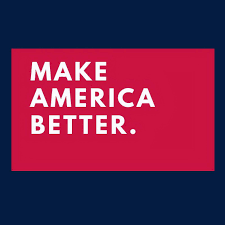
Here are short takes on five important good news stories that have gotten little attention in the mainstream media. Each provides a quick summary of the story, a hint as to why it’s important, and a link to more information.
STORY #1: States Newsroom, the country’s largest state-focused non-profit news organization, now has a full-time presence in all 50 state capitals. Its network has 39 freestanding newsrooms and, in the other 11 states, partnerships with state-focused, non-profit news organizations. It has 220 full-time employees and an annual budget of over $22 million. Statehouse policy and politics are the major focuses of its reporting, with full-time reporters covering every state legislature. It does not accept any corporate funding and publicly discloses all contributions of over $1,000. In addition to news, it publishes commentary that is clearly labeled as such, is completely separated from its news reporting, and is pro-transparency and pro-democracy. It does not publish commentary from current office holders or candidates. [1]
STORY #2: A recent study by the Economic Policy Institute updated a previous analysis from 2016 of the performance of the U.S. economy under Democratic and Republican presidents. [2] It confirmed and extended the finding that the economy consistently performs significantly better under Democratic presidents across a wide range of economic indicators. This is true for market-based data that are not affected by government supports or subsidies, dispelling the contention that the superior economic performance is due to Democratic spending on safety net programs. The report acknowledges that these findings cannot claim to prove there’s a cause-and-effect relationship between the party of the President and economic outcomes. It also acknowledges that the President has limited control over the economy and that luck plays a role. In terms of luck, it notes that both Obama and Biden inherited depressed economic conditions where the economy had been damaged by severe shocks, and, nonetheless, the strong economic performance under Democratic presidents persisted.
Examining economic data both from 1949 to the present and from 1981 to the present finds that economic performance under Democratic presidents was noticeably better on:
- Growth in Gross Domestic Product,
- Job growth,
- Wage and income growth,
- Unemployment,
- Business investment,
- Inflation, and
- Interest rates.
At the growth rate typical under Democratic presidents, per capita living standards would double every 28 years, while with the growth rate typical under Republican presidents, per capita living standards would take 56 years to double. Moreover, income growth is much more equitable under Democratic presidents than Republican ones, with much higher income growth for those with higher incomes under Republican presidents.
STORY #3: In a major antitrust settlement, Visa and Mastercard, the two dominant corporations in the credit card business, have agreed to limit the fees they charge merchants for purchases using their credit cards. It’s estimated that this will save merchants at least $6 billion a year. Some of these savings may be passed on to consumers. Currently, the typical 2% credit card fee costs merchants over $100 billion a year.
Merchants are also now allowed to charge consumers differentiated fees depending on the credit card they use for their purchase. This incentivizes consumers to use lower cost cards.
The antitrust case has been in the courts for almost 20 years and five years ago Visa and Mastercard paid roughly $6 billion to merchants in what was, at the time, the largest settlement ever in a class action lawsuit. [3]
STORY #4: The Biden administration has taken a stand for safety and workers with a new federal regulation requiring most freight trains to have two-person crews. Ever since the February 2023 toxic train derailment and fire in East Palestine, Ohio, train safety and working conditions have been under intense scrutiny. However, little has changed and the railroad safety bill in Congress has stalled. The Biden administration has been working on this new regulation for two years. The process garnered 13,000 public comments with only about 60 in opposition to two-person crews. Nonetheless, the big railroad corporations have lobbied hard against it and have now gone to court to block the new regulation. The typical train these days is about a mile long (5,300 feet) with roughly 100 cars; some are three miles long. Despite the railroad corporations’ stated commitment to safety, particularly since the Ohio derailment, they are strongly opposing two-person crews and there are currently an average of almost three derailments every day. [4]
STORY #5: As an update on a previous post, Please sign this petition to reduce the Medicare Advantage rip off, the Biden administration held the line on the proposed 3.7% increase in Medicare Advantage payments despite intense lobbying by the insurance industry, which sponsors and makes big profits off Medicare Advantage plans. As a result, Medicare’s payments to Medicare Advantage plans are expected to increase by over $16 billion in 2025, to a total of over $500 billion. In the past, the federal government has usually succumbed to industry lobbying and upped the annual Medicare Advantage increase from the initially proposed amount. Although some advocates were disappointed that the Biden administration didn’t reduce the proposed increase or do more to rein in the abuses by Medicare Advantage plans, this shows that advocacy can change past precedent and result in at least a first step in reining in the for-profit rip off of Medicare Advantage plans. [5]
[1] Joseph, C., 4/5/24, “This nonprofit has newsrooms in all 50 state capitals. Is it the future of state journalism?” Columbia Journalism Review (https://www.cjr.org/the_media_today/states-newsroom-local-politics-policy-model.php)
[2] Bivens, J., 4/2/24, “Economic performance is stronger when Democrats hold the White House,” Economic Policy Institute (https://www.epi.org/publication/econ-performance-pres-admin/)
[3] Smith, P., 3/27/24, “Visa, Mastercard reach $30 billion deal with US retailers,” The Boston Globe from Bloomberg News
[4] Funk, J., 4/3/24, “Freight railroads must keep two-person crews,” The Boston Globe from the Associated Press
[5] Corbett, J., 4/2/24, “Campaigners beat ‘greedy’ insurance giants exploiting Medicare Advantage,” Common Dreams (https://www.commondreams.org/news/medicare-advantage-plans)
